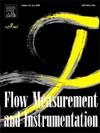Cavitation and erosion wear analysis of stepped flow channel in cage-typed sleeve control valve
IF 2.3
3区 工程技术
Q2 ENGINEERING, MECHANICAL
引用次数: 0
Abstract
Cage-typed sleeve control valve (CSCV) is a critical component in direct coal liquefaction system. Gas-liquid-solid three-phase flow often occurs in the valve cage, which can cause cavitation and erosion wear. Consequently, the study of erosion wear and multiphase flow in the valve cage is necessary. A numerical model for multiphase flow is developed considering the momentum transfer between gas, liquid, and solid. To analyze the cavitation and erosion wear in the valve cage, the simplified stepped flow channel is designed. The Zwart-Gerber-Belamri cavitation model and Mansouri erosion wear model are used to analyze the erosion and cavitation inside the CSCV by numerical methods. Effects of particle concentration (ranging from 0.1 % to 0.5 %), particle velocity (ranging from 100 m/s to 150 m/s), and vapor phase on the erosion wear in the stepped flow channel are studied. The most severe erosion wear area in the stepped flow channel is the inner edge of the chamfer. The maximum erosion wear rate (Rmax) on the chamfer increases with particle concentration and velocity. The vapor phase induced by cavitation primarily concentrates near the wall, which leads to the phenomenon that the particles move along the edge of the vapor phase and reduce the distribution of particles near the wall, thus mitigating the erosion wear on the wall of the inner orifice. This work can provide a reference for failure mechanism and prevention of CSCV and other similar valves.
笼型套筒控制阀梯级流道的气蚀磨损分析
笼型套筒控制阀(CSCV)是煤直接液化系统的关键部件。阀笼内经常发生气-液-固三相流动,会引起气蚀和冲蚀磨损。因此,有必要对阀笼内的冲蚀磨损和多相流进行研究。建立了考虑气、液、固之间动量传递的多相流数值模型。为分析阀笼内的气蚀磨损,设计了简化阶梯式流道。采用Zwart-Gerber-Belamri空化模型和Mansouri冲蚀磨损模型对CSCV内部的冲蚀和空化进行了数值分析。研究了颗粒浓度(0.1% ~ 0.5%)、颗粒速度(100m ~ 150m /s)和气相对阶梯流道冲蚀磨损的影响。阶梯式流道中冲蚀磨损最严重的区域是倒角的内缘。倒角的最大冲蚀磨损率(Rmax)随颗粒浓度和速度的增大而增大。空化引起的气相主要集中在壁面附近,导致颗粒沿气相边缘移动,减少了壁面附近颗粒的分布,从而减轻了内孔壁面的冲蚀磨损。该工作可为CSCV及其他类似阀门的失效机理和预防提供参考。
本文章由计算机程序翻译,如有差异,请以英文原文为准。
求助全文
约1分钟内获得全文
求助全文
来源期刊

Flow Measurement and Instrumentation
工程技术-工程:机械
CiteScore
4.30
自引率
13.60%
发文量
123
审稿时长
6 months
期刊介绍:
Flow Measurement and Instrumentation is dedicated to disseminating the latest research results on all aspects of flow measurement, in both closed conduits and open channels. The design of flow measurement systems involves a wide variety of multidisciplinary activities including modelling the flow sensor, the fluid flow and the sensor/fluid interactions through the use of computation techniques; the development of advanced transducer systems and their associated signal processing and the laboratory and field assessment of the overall system under ideal and disturbed conditions.
FMI is the essential forum for critical information exchange, and contributions are particularly encouraged in the following areas of interest:
Modelling: the application of mathematical and computational modelling to the interaction of fluid dynamics with flowmeters, including flowmeter behaviour, improved flowmeter design and installation problems. Application of CAD/CAE techniques to flowmeter modelling are eligible.
Design and development: the detailed design of the flowmeter head and/or signal processing aspects of novel flowmeters. Emphasis is given to papers identifying new sensor configurations, multisensor flow measurement systems, non-intrusive flow metering techniques and the application of microelectronic techniques in smart or intelligent systems.
Calibration techniques: including descriptions of new or existing calibration facilities and techniques, calibration data from different flowmeter types, and calibration intercomparison data from different laboratories.
Installation effect data: dealing with the effects of non-ideal flow conditions on flowmeters. Papers combining a theoretical understanding of flowmeter behaviour with experimental work are particularly welcome.
 求助内容:
求助内容: 应助结果提醒方式:
应助结果提醒方式:


